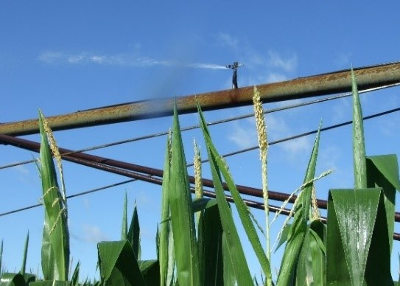By Mark Landefeld
Dr. Boyles, last week, gave us all the nuts and bolts for providing the necessary energy and protein to fulfill the cow’s nutritional needs. However, we should also monitor our livestock’s body condition scores to insure the feed being provided coincides with what we see in our livestock’s physical appearance.
Timid animals may not always get enough nutrients even though we are providing them. Our calculations could be wrong also. We hear about so many 1000-1200 pound cows, but there are very few of them at my place. Of my mature cows, more will tip the scale over 1200 lbs. than under and my 2nd calf heifers will be the only ones in that 1000-pound plus range. Therefore, unless we have separated everybody into the proper groups and fed accordingly, body condition scores may be changing if we are not very observant.
Stockpiled grass, at my farm, did not last nearly as long as I expected it to this year. Poor hay quality from 2018 has been discussed in about every publication and every loafing spot farmers hang-out at, so I think we should be aware that Dr. Boyles information needs put to use, especially this winter!
The Fact Sheet link listed above gives great detail about understanding Body Condition Scoring and how to use it so I will not go into detail about it here. However I want to use three of the pictures, body condition score number 4, 5 and 6 because I think they are very relevant to many producers across Ohio, maybe the nation, this winter/today.
4. Borderline thin– Forerib not visible, but 12th and 13th ribs visible.
5. Moderate – More muscle left. Ribs 12 and 13 not visible to the eye.
6. Good – Smooth appearance; some fat on back and tail. Ribs no longer visible.
Normally my cows look like number 6’s (some 7’s) in January, even into late February, as calving season begins. However, this year is different. I think the cows were their normal number 6+ in late November/early December, but the cold rains and mud they have dealt with the past two months is taking its toll. Even though my hay test numbers showed adequate nutrients for middle 1/3 and last 1/3 of pregnancy, the girls are not number 6’s & 7’s today.
I believe they are still body condition 5’s & some 6’s now, but we have the normally cold and muddy late February and March conditions coming yet. I don’t want them slipping to number 4’s before starting to supplement, because at that point I believe it may be too late to keep everyone on track to calve normally, provide high quality colostrum, milk routinely and rebreed in a timely manner. So, I’m sure many of you are saying that feeding concentrate feeds are expensive. You don’t have to tell me that because I understand completely. My cows have not had grain since they were replacement heifers and I know what feed costs. I also know it is pretty easy to estimate what a missed heat cycle (maybe more than one) cost me once the bull is turned in (see the chart below). What is much harder to calculate is the amount of loss from a distressed calf at calving, loss of pounds gained from poor quality colostrum and milk from momma because she did not have proper nutrition.

Note*- All prices were calculated using a standard price of $ 1.50/lb. Actual loss will be more if calves sell for more $ 1.50/lb.
So, what body condition are your cows in right now? When is your calving window to start and finish? What quality hay/feed have you been feeding? In addition, maybe more importantly, what quality is the hay you will be feeding 30-90 days after calving when the cow’s nutrient requirement will be at its peak demand? Think about this; one cow missing one-heat cycle, at the 2.5 lbs. rate of gain/day in the chart, would pay for about 10 – 50lbs. bags of concentrate feed. Consider all these things and use tools available like the Body Condition Scoring to keep your livestock on track, have strong healthy calves and be ready to rebreed in that 82-day window to be successful and calve on time next year. Do extra concentrate feeds seem more doable now?